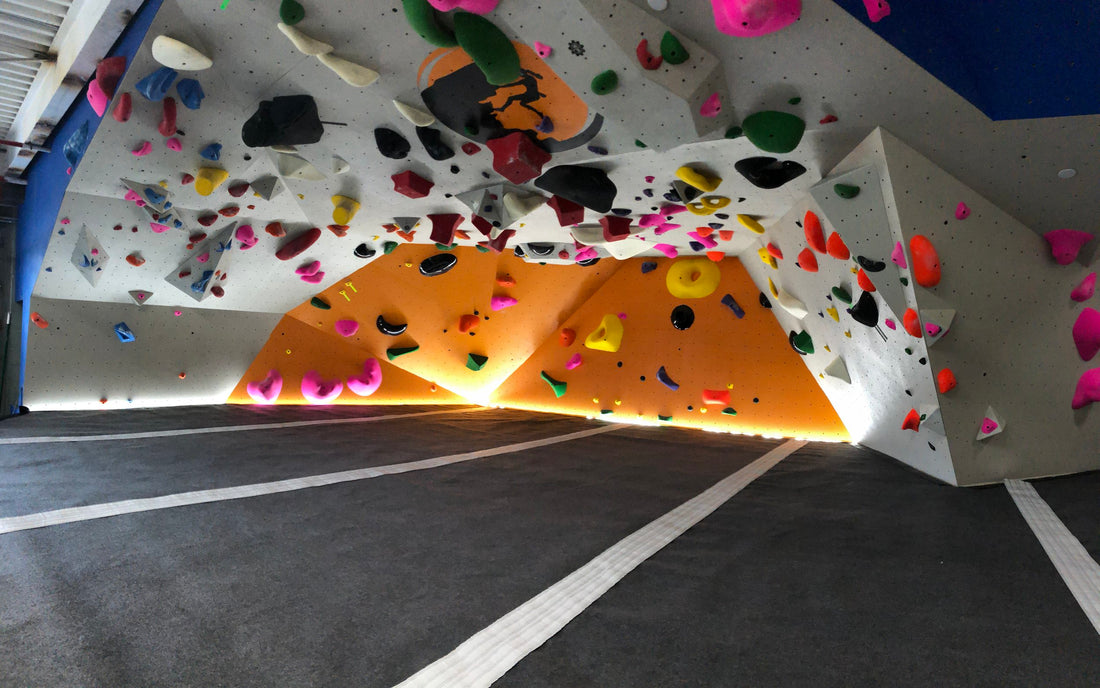
Bouldering to Big Walls: A Guide to Different Climbing Experiences
Climbing is a multifaceted sport, offering a range of experiences that cater to various interests, skills, and environments. From the intimate challenge of bouldering to the grand adventure of big wall, each type provides a unique set of experiences and requires distinct skills and strategies. This guide explores the different experiences, helping climbers understand and navigate the diverse world.
Bouldering: The Art of Short, Intense Challenges
Bouldering is a style that focuses on short, powerful routes known as "problems."Typically done on natural boulders or indoor climbing walls, bouldering requires strength, technique, and problem-solving skills. Climbers use minimal equipment—usually just shoes and chalk—relying on padded mats (crash pads) for protection.
Key Characteristics:
1.Short Routes:Bouldering problems are usually no more than 20 feet (6 meters) high. The challenge lies in the difficulty of individual moves rather than the height.
2.Technique and Strength:Success in bouldering often depends on technical skills, body positioning, and explosive strength.
3.Minimal Gear:Climbing shoes, chalk, and crash pads are the primary equipment. This simplicity makes bouldering accessible and straightforward.
Experience and Tips:
1.Problem Solving:Bouldering emphasizes figuring out the sequence of moves, known as "beta," to complete a problem. It’s a mental and physical puzzle that rewards creativity and strategy.
2.Training Focus:Bouldering builds finger strength, core stability, and explosive power. Regular practice and problem-solving are key to progression.
3.Community:Bouldering often fosters a strong sense of community, with climbers frequently sharing tips and encouragement.
Sport Climbing: Mastering the Vertical World
Sport climbing involves climbing fixed routes that are protected by pre-placed anchors or bolts. It is commonly done on both natural rock and indoor walls. Sport climbing requires a combination of endurance, technique, and the ability to manage fear.
Key Characteristics:
1.Route Length:Sport routes can range from short single-pitch climbs to multi-pitch routes. They typically involve clipping quickdraws into fixed protection as climbers ascend.
2.Safety Gear:Climbers use harnesses, ropes, quickdraws, and helmets. The use of ropes and protection allows for longer climbs with the ability to rest and recover.
3.Skill Development:Sport climbing emphasizes route-reading, clipping technique and efficient.
Experience and Tips:
1.Techniques:Learning to manage energy and technique, including efficient clipping and resting strategies, is crucial for success.
2.Route Diversity:It offers a variety of routes, from overhangs and slabs to cracks and faces. This diversity helps climbers develop a broad skill set.
3.Safety:Regular practice of belaying skills, knot tying, and route planning is essential for safety.
Traditional Climbing: Embracing Adventure and Self-Reliance
Traditional (trad) climbing involves placing and removing gear (such as cams and nuts) to protect the climber as they ascend natural rock. This style of climbing emphasizes self-reliance and often involves longer routes and multi-pitch climbs.
Key Characteristics:
1.Protection Placement:Climbers place protection gear as they climb, which requires a deep understanding of gear placements and rock features.
2.Longer Routes:Trad climbs are often longer and may involve multi-pitch ascents, requiring careful planning and endurance.
3.Skill and Knowledge:Trad climbing demands expertise in gear placement, route finding, and techniques specific to natural rock features.
Experience and Tips:
1.Gear Skills:Proficiency in placing and evaluating protection gear is crucial. Practice and experience in different rock types and conditions are necessary.
2.Route Finding:Trad climbers must be adept at route finding and navigating complex rock features, often relying on guidebooks and route descriptions.
3.Commitment:Trad climbing often involves committing to a route without the option to retreat easily. Mental preparation and confidence in gear are essential.
Big Wall: The Pinnacle of Vertical Adventure
Big wall climbing is a challenging and adventurous style that involves climbing long, multi-pitch routes on massive rock faces. It often requires days or even weeks of effort and involves techniques like aid climbing, hauling gear, and camping on the wall.
Key Characteristics:
1.Extended Routes:Big wall routes can extend for thousands of feet and require multiple days to complete. People often sleep on the wall in hanging bivouacs.
2.Aid Climbing:In addition to big wall often involve aid techniques, using gear to help progress up the route.
3.Team Effort:Big wall climbs typically require a team approach, with climbers sharing tasks like hauling gear, managing anchors, and maintaining camp.
Experience and Tips:
1.Planning and Preparation:Extensive planning is required for big wall, including route research, gear selection, and logistical arrangements.
2.Skill Development:Proficiency in aid climbing, hauling systems, and multi-pitch techniques is essential. Big wall climbs also require strong teamwork and communication.
3.Endurance and Mental Toughness:Big wall demands physical endurance and mental resilience. Climbers must be prepared for extended efforts and challenging conditions.
Conclusion
From the intimate challenges of bouldering to the grand adventures of big wall climbing, offers a rich tapestry of experiences. Each style has its own unique demands and rewards, allowing climbers to explore different aspects of the sport and push their limits in various ways. Understanding these different experiences can help climbers choose the right path for their interests, skills, and aspirations, ultimately leading to a deeper appreciation and enjoyment of the vertical world.
